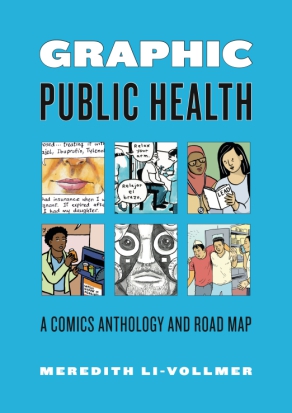The Lancet series on commercial determinants of health (and, therefore, nutrition)
Executive Summary
Commercial actors can contribute positively to health and society, and many do, providing essential products and services. However, a substantial group of commercial actors are escalating avoidable levels of ill health, planetary damage, and inequity—the commercial determinants of health. While policy solutions are available, they are not currently being implemented, and the costs of harm caused by some products and practices are coming at a great cost to individuals and society.
A new Lancet Series on the commercial determinants of health provides recommendations and frameworks to foster a better understanding of the diversity of the commercial world, potential pathways to health harms or benefits, and the need for regulatory action and investment in enterprises that advance health, wellbeing, equity, and society.
- Defining and conceptualising the commercial determinants of health: Anna B Gilmore, Alice Fabbri, Fran Baum, Adam Bertscher, Krista Bondy, Ha-Joon Chang, Sandro Demaio, Agnes Erzse, Nicholas Freudenberg, Sharon Friel, Karen J Hofman, Paula Johns, Safura Abdool Karim, Jennifer Lacy-Nichols, Camila Maranha Paes de Carvalho, Robert Marten, Martin McKee, Mark Petticrew, Lindsay Robertson, Viroj Tangcharoensathien, Anne Marie Thow
Although commercial entities can contribute positively to health and society there is growing evidence that the products and practices of some commercial actors—notably the largest transnational corporations—are responsible for escalating rates of avoidable ill health, planetary damage, and social and health inequity; these problems are increasingly referred to as the commercial determinants of health. The climate emergency, the non-communicable disease epidemic, and that just four industry sectors (ie, tobacco, ultra-processed food, fossil fuel, and alcohol) already account for at least a third of global deaths illustrate the scale and huge economic cost of the problem. This paper, the first in a Series on the commercial determinants of health, explains how the shift towards market fundamentalism and increasingly powerful transnational corporations has created a pathological system in which commercial actors are increasingly enabled to cause harm and externalise the costs of doing so….
- Conceptualising commercial entities in public health: beyond unhealthy commodities and transnational corporations: Jennifer Lacy-Nichols, Sulakshana Nandi, Melissa Mialon, Jim McCambridge, Kelley Lee, Alexandra Jones, Anna B Gilmore, Sandro Galea, Cassandra de Lacy-Vawdon, Camila Maranha Paes de Carvalho, Fran Baum, Rob Moodie
Most public health research on the commercial determinants of health (CDOH) to date has focused on a narrow segment of commercial actors. These actors are generally the transnational corporations producing so-called unhealthy commodities such as tobacco, alcohol, and ultra-processed foods….Moving forward, it is necessary to develop a nuanced understanding of commercial entities that goes beyond this narrow focus, enabling the consideration of a fuller range of commercial entities and the features that characterise and distinguish them…Improved differentiation among commercial actors strengthens the capacity of practitioners, advocates, academics, regulators, and policy makers to make decisions about, to better understand, and to respond to the CDOH through research, engagement, disengagement, regulation, and strategic opposition.
- Commercial determinants of health: future directions: Sharon Friel, Jeff Collin, Mike Daube, Anneliese Depoux, Nicholas Freudenberg, Anna B Gilmore, Paula Johns, Amos Laar, Robert Marten, Martin McKee, Melissa Mialon
This paper is about the future role of the commercial sector in global health and health equity. The discussion is not about the overthrow of capitalism nor a full-throated embrace of corporate partnerships. No single solution can eradicate the harms from the commercial determinants of health—the business models, practices, and products of market actors that damage health equity and human and planetary health and wellbeing. But evidence shows that progressive economic models, international frameworks, government regulation, compliance mechanisms for commercial entities, regenerative business types and models that incorporate health, social, and environmental goals, and strategic civil society mobilisation together offer possibilities of systemic, transformative change, reduce those harms arising from commercial forces, and foster human and planetary wellbeing. In our view, the most basic public health question is not whether the world has the resources or will to take such actions, but whether humanity can survive if society fails to make this effort.
- Achieving health for all requires action on the economic and commercial determinants of health. Tedros Adhanom Ghebreyesus
- Anna Gilmore: Confronting the commercial determinants of health
-
Rob Moodie: a radical voice in public health: Geoff Watts
- The public health playbook: ideas for challenging the corporate playbook. Jennifer Lacy-Nichols, Robert Marten, Eric Crosbie, Rob Moodie. The Lancet Global Health, Vol. 10, No. 7, 2023
Infographics
- Rebalancing global power asymmetries to substantially improve human and planetary health. Although commercial entities can contribute positively to health and society, the products and practices of some commercial actors are responsible for escalating rates of avoidable ill health, planetary damage, and social and health inequity.
*******
For 30% off, go to www.ucpress.edu/9780520384156. Use code 21W2240 at checkout.



